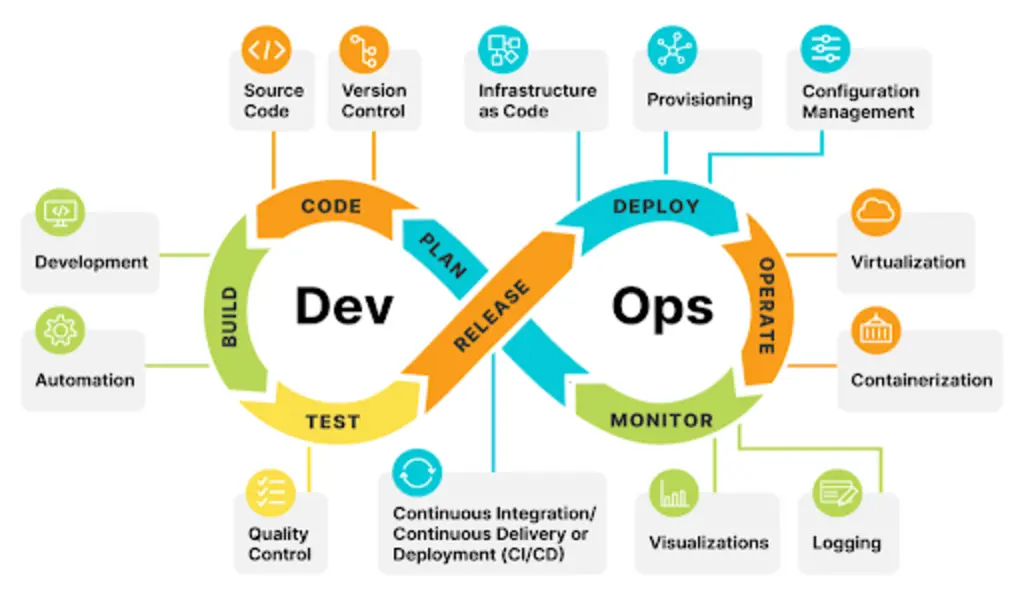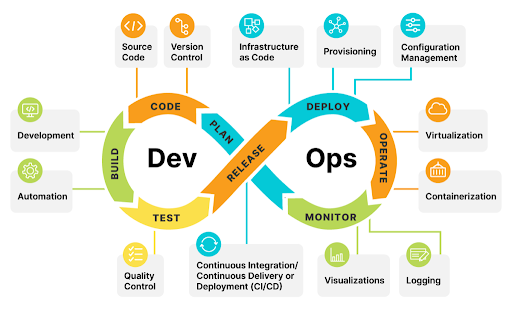Tech
Top 6 Strategies for Implementing DevOps in Software Development Organizations

Unleash DevOps strategies for accelerated software delivery, enhancing collaboration, automation, and efficiency in software development organizations
Software Development companies, nowadays, are in a race against time. Even so, they are constantly looking for ways to make their software delivery faster, better, and more efficient. Enter DevOps, which is a dynamic mix of development and management that changes the game.
It not just combines development and operations but concentrates on collaboration, communication, and automation to speed up the process of making and deploying software.
In this blog, we’ll look at some of the most acceptable practices for any software development company to use DevOps.
Make It Easy To Work Together
One of the most important parts of the DevOps methodology is creating a mindset of collaboration between the teams responsible for development and operations.
By breaking down silos and facilitating cross-functional collaboration, a company can improve interpersonal interaction, get rid of any sort of delays, and further boost total productivity.
In addition, regular meetings, strategy-making sessions, and splitting up roles can also help make a team feel more like one cohesive unit.
Automate As Much As Possible
There is no denying that automation is a big part of how DevOps works. By automating jobs that take a lot of time and are done over and over again, it becomes easy for businesses to cut down on errors, improve efficiency, and speed up software delivery.
So, using tools like continuous integration (CI) and continuous deployment (CD) pipelines to handle the build, testing, and release steps really helps. This makes sure that the software is first built, then tested, and further put into use in the same way and in a reliable way every time.
For instance, let’s say, you have a web application development project in hand. As part of your best practices, automation is bound to take center stage here. You can easily rely on a CI/CD pipeline to automate its build, testing, and deployment steps.
- First, it triggers a build process fetching the latest code, compiles it, and runs unit tests to make sure code quality is up to the mark and also identifies any issues, just in case.
- Second, the pipeline moves on to the testing phase once the build is successful. It further executes integration, functional, and performance tests. Further to this, the results are collected and thoroughly analyzed to pinpoint any regressions or failures.
- Last but not least, once the testing is done, it moves on to the deployment phase. Here, it deploys the application to the production process which involves provisioning infrastructure, configuring application settings, and performing any required database migrations.
Integrate Infrastructure as Code (IaC) in Software Development
It is a way to supervise infrastructure resources by using configuration files that computers can read rather than directly setting up servers and environments. In fact, by treating infrastructure as code, organizations can keep track of various versions of their infrastructure configurations.
This, on the other hand, makes it easy to copy environments and makes sure that everything is the same at every stage of the software development process. In particular, IaC can be used successfully with the help of tools like Terraform and Ansible.
Practice Continuous Integration & Deployment
Continuous Integration (CI) and Continuous Deployment (CD) are the two best sought-after DevOps techniques. One part of CI is using automated testing to find integration problems fast and to add code changes from different developers to a central repository.
Once the software passes the CI tests, CD keeps going by deploying it right away to the production or testing environments. Both CI and CD practices ensure the software is continually integrated, tested, and deployed, trimming the time between creation and release.
Keep An Eye On and Track the Performance of Software Development
If you want DevOps to work, it is always best to track and measure how well your software and systems function. You can use monitoring tools to get an idea of how your systems and apps are running in real-time. Take advantage of metrics, logs, and alerts to find issues before they actually happen, fix them, and enhance speed. Continuous tracking helps find obstacles, makes the system more scalable, and gives people a better experience.
Imagine you have an e-commerce platform and you are to implement DevOps practices. In that case, you leverage monitoring tools to get real-time insights into system and application performance. If you notice a sudden rise in response time during busy shopping times, this could mean that there is a speed bottleneck.
In that case, you’ll take the help of the monitoring tool’s through logs and alerts, and quickly figure out what’s going wrong. You find out that there are multiple user sessions which are leading to a longer reaction time. Now that you know of this, it becomes easy for you to set up a caching system and enhance the query to make the database-less busy.
Encourage A Culture of Learning All The Time
DevOps is an ongoing process that needs people to always learn and get more profitable. Encourage your IT consulting company to have a culture of always learning and coming up with new ideas. Hold regular reviews to think about what is going well and what can be done to make it better.
Motivate all the team members to try new specialties and give them chances to improve their skills and learn about new tools. By encouraging a learning mindset, you can keep up with changing market needs and stay ahead of the competition.
The Bottom Line
In order for software development companies to leverage DevOps, they need to change their thinking, methods, and practices. By incorporating custom software solutions and following the best practices discussed in this blog, organizations can unlock the full potential of DevOps.
These include creating an environment of cooperation, simplifying procedures, carrying out Infrastructure as Code, adopting continuous integration and deployment, keeping track of performance, and stimulating a culture of continuous learning.
Binmile’s DevOps Consulting Services, specializing in custom software solutions, help set up quick development cycles that include a live code production and deployment system.
We make sure that continuous rollout happens, which means that your software is always ready for release and delivery. Above all, we make sure to track SLAs and key measures that affect the development process as a whole. If you have a custom software project in mind, reach out to us today!
SEE ALSO: Empowering Dynamic Video Creation: Meta Expands Reels Editing Tools On Facebook Feed
































